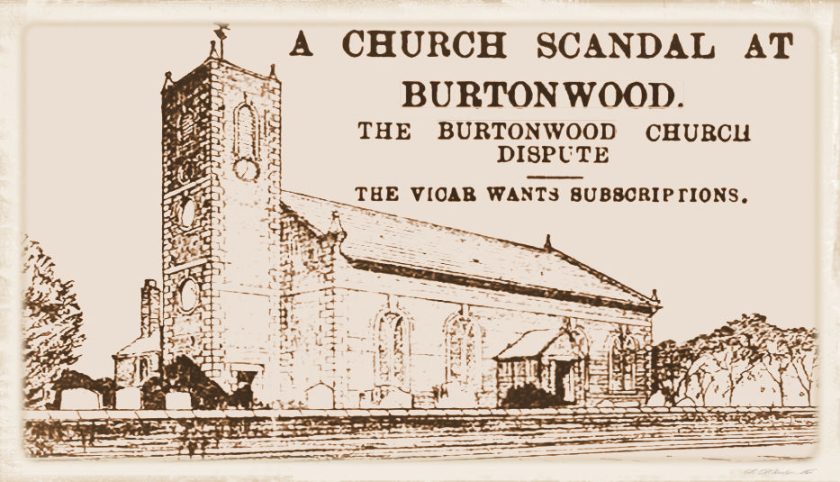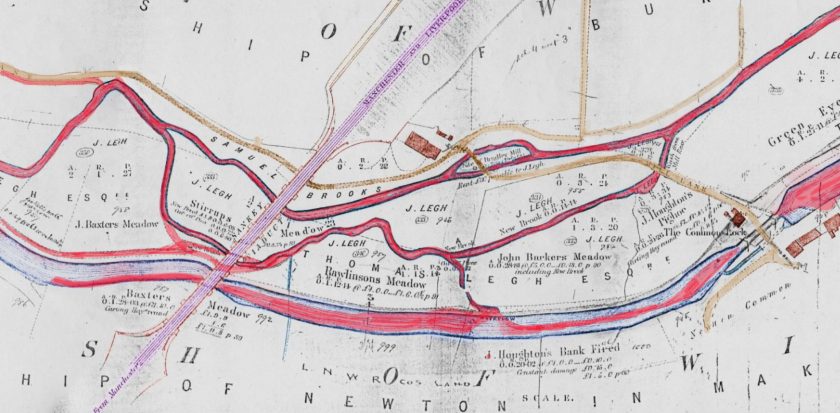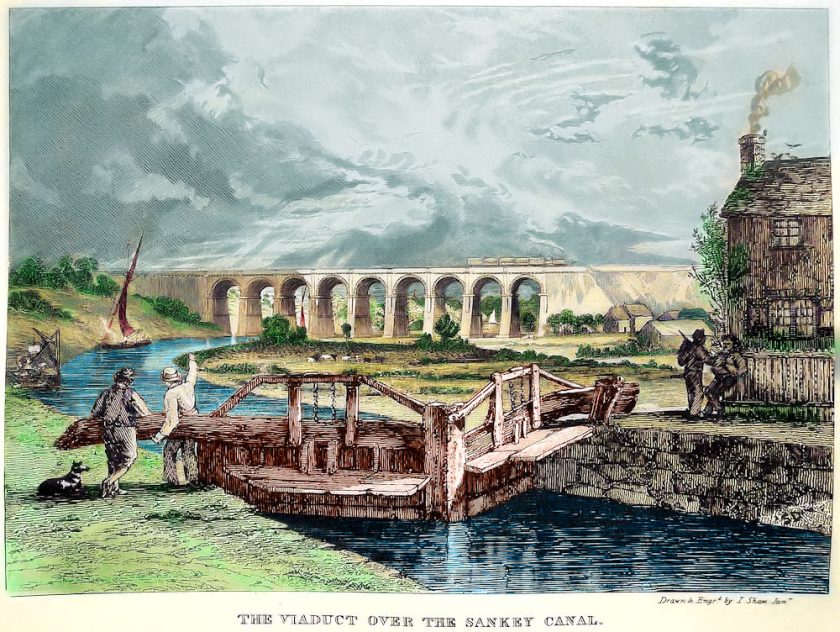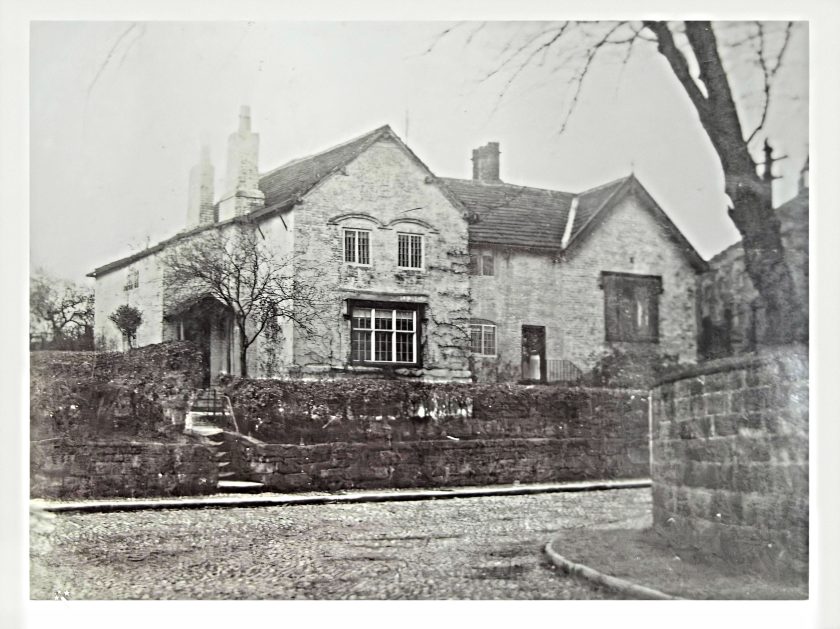A Historical Overview:
The Burtonwood Church disputes highlight a complex interplay of religious, social, and personal dynamics within a small community during the late 19th century. This series of events reflects broader themes of ecclesiastical governance, community resistance, and the challenges of pastoral leadership in changing times.
Detailed Chronology and Excerpts:
October 30, 1891 – Death of Rev. W. Wilson
Newton and Earlestown Guardian
The community of Burtonwood faced a profound loss with the death of Rev. W. Wilson, who had served the parish for fifteen years. His death was not just a personal loss but marked the end of an era of stable pastoral care, deeply affecting the parishioners who had seen him as a pillar of support.
Excerpt: “The note of joy and thanksgiving… was suddenly turned to pain and sorrow on Wednesday morning when it became known that the Rev. W. Wilson… had at last succumbed to his long and painful illness.”
November 27, 1891 – Appointment of a New Vicar
Newton and Earlestown Guardian
The appointment of Rev. A. M. Mitchell was met with controversy. His arrival, determined by the patronage system, ignored the preferences of parishioners who favored the continuity represented by Rev. J. Johnson.
Excerpt: “The Rector of Warrington (Rev. F. W. Willis) has offered the living of Burtonwood, rendered vacant by the death of the Rev. W. Wilson, to the Rev. A. M. Mitchell…”
December 4, 1891 – Burtonwood Church Bazaar
Newton and Earlestown Guardian
The church bazaar became a focal point for community gathering and also a subtle protest against the newly appointed vicar. It reflected both the energy and the tension within the church community.
Excerpt: “Yesterday afternoon (Thursday), a two-day bazaar in connection with St. Michael’s Church, Burtonwood, commenced in the schoolroom…”
March 18, 1892 – Affairs at Burtonwood Church
Newton and Earlestown Guardian
Reverend Mitchell’s efforts to assert his vision for the parish met with resistance and dissatisfaction, further straining relations between him and the parishioners.
Excerpt: “He has now issued a circular calling attention to the want of a new burial ground and vicarage house…”
April 8, 1892 – A Church Scandal at Burtonwood
Newton and Earlestown Guardian
Public disputes between the vicar and the churchwardens over church management and financial matters became increasingly contentious.
Excerpt: “The churchwardens, who are extremely indignant against the proposed alterations and other matters which the vicar said should be done, contradict the allegations of the vicar.”
April 29, 1892 – The Vicar Wants Subscriptions
Newton and Earlestown Guardian
Rev. Mitchell’s sermon highlighted a direct plea for community support to address the church’s physical and spiritual needs.
Excerpt: “He remarked that he was anxious to raise about £1,000 by Whitsuntide for a vicarage and needed alterations to the church building…”
June 10, 1892 – Burtonwood Church Developments
Newton and Earlestown Guardian
The installation of a new font symbolized a potential new beginning for the church, amidst ongoing disputes.
Excerpt: “A new font, designed and built by Messrs. Jones and Willis of Birmingham, was used for the first time…”
August 25, 1893 – Burtonwood Vicarage Ground-breaking
Newton and Earlestown Guardian
The construction of a new vicarage was initiated, marking a significant development aimed at stabilizing the vicar’s presence and potentially mending fences with the parish community.
Excerpt: “The first sod of the new vicarage site was cut last week by the vicar, the Rev. A. M. Mitchell…”
Tuesday 18 February 1902 – BURTONWOOD PARISH CHURCH
St. Helens Newspaper & Advertiser
Rev. A. M. Mitchell calls for action to replace the deteriorating St. Michael’s Church in Burtonwood, a building compromised by structural weaknesses and a history dating back to 1764.
Excerpt: “You will not object, I imagine, to allow me space in your columns to make known the fact that our church here is a condemned building, and that willing or unwilling, we are now face to face with the serious task of erecting a new parish church. The case is one of necessity; we have, I regret, no choice, if the Ecclesiastical Commissioners’ Surveyor is deemed worthy of credit. The report of this gentleman on the Church of St. Michael, Burtonwood, is best given verbatim. No words of mine can make it more forcible or more eloquent.”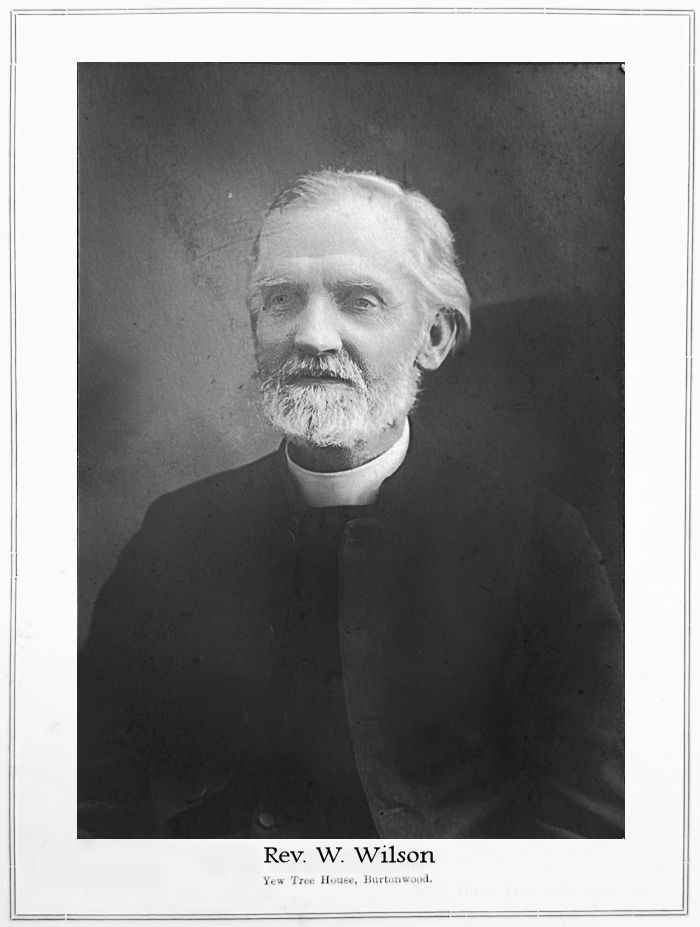
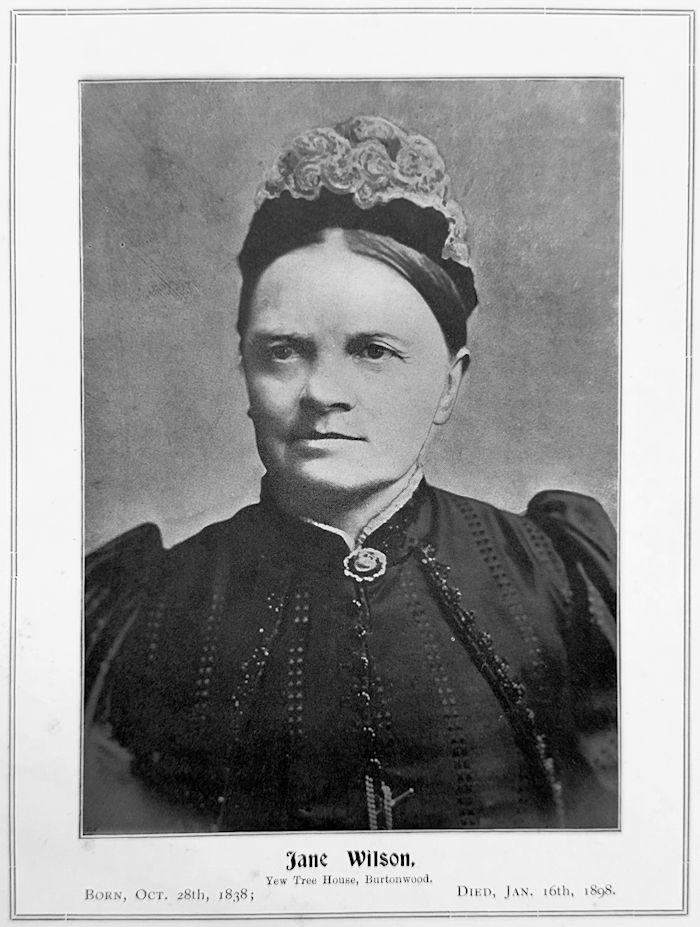
Here is Each article in full:
DEATH OF THE REV. W. WILSON, VICAR OF BURTONWOOD
Newton and Earlestown Guardian – Friday 30 October 1891
The note of joy and thanksgiving which was sounded by the church people of Burtonwood on Sunday last in their harvest festival services was suddenly turned to pain and sorrow on Wednesday morning when it became known that the Rev. W. Wilson, who for the past 15 years had been vicar of the parish, had at last succumbed to his long and painful illness. The tidings were received with universal regret by everybody in the neighbourhood, and especially by those old parishioners who knew the deceased when he first came to the parish and had seen the many good works which he performed.
Deceased has been in very bad health for four years and never seemed to properly recover from the shock caused by his second wife’s death, which occurred very suddenly on January 31st, 1854. His death took place at Hoylake, where he had been for some time past for the benefit of his health. During the last few days, he appeared to get rapidly worse, and Dr. Mouncey, of Earlestown, who had been his medical adviser for the past four and a half years, was sent for on Monday last, and when he left, deceased promised to go again the following Wednesday. But early on Wednesday morning, he received a telegram informing him that the reverend gentleman had passed away at five o’clock that morning, death being the result of a complication of diseases accelerated by dropsy.
Deceased, who was born in Hull, was brought up a Roman Catholic and educated for the medical profession, obtaining a degree in medicine. For some reason, he left home and devoted his time to literary work, residing in Derby and then in Sheffield. He was a highly educated man and acted as correspondent and leader writer for the Standard and another London paper, besides contributing articles on various subjects to magazines and other periodicals.
He then came to St. Helens and acted as an assistant to the Medical Officer of Health, finally renouncing the Roman faith and being ordained in the Church of England. For some time, he was curate under Dr. Carr at St. Helens Parish Church, being appointed to the living of Burtonwood in the latter part of 1876. The living was a very poor one, being scarcely worth £100 per annum, but he threw himself heart and soul into the work of organizing and improving the state of the church and parish.
The School Board, which had been introduced into the village in March of that year, found in him an experienced and clear-headed helper, and so energetic was he that he did not hesitate to take upon himself the duties of clerk. He soon became universally beloved in his parish, being ever ready to help any of the poor people in their afflictions both in soul and body, his skill as a physician being very often brought into use with very good results.
In addition to the care of his parish, he also undertook the coaching of students and prepared them for the London and other examinations. A large amount of the income of the living is derived from a farm at Croft, and deceased found the buildings, fences, etc., of this in a ruinous condition, which necessitated the expenditure of a very great amount of money, and it is estimated that he spent not far off £300 in the improvement of the farm.
During his connection with the parish, he also gave a new porch and communion rails for the church, and provided nearly all the money requisite for the re-seating; while the church has also been fitted with new windows and a new roof. His power as an organizer was practically unlimited.
Things went on well until January 31st, 1884, when his second wife, Hannah, who was looking over the garden wall while a funeral was taking place, suddenly complained of being ill and died before her husband could be brought out of the churchyard. This terrible shock quite upset the reverend gentleman, and he was never himself after that, his health, and consequently a large amount of his usefulness, forsaking him altogether, and for the last four years, he has been a victim to nearly every kind of disease.
After he became incapable of doing duty, the services were carried on by the Rev. W. Michael of Manchester, and other clergy, until the bishop of the diocese insisted that Mr. Wilson should appoint a curate-in-charge, and he accordingly appointed the Rev. J. Johnson of London, who has since carried on the work of the parish with much success.
Mr. Wilson was married again last November to Mrs. Jane Forshaw, widow of Mr. Thomas Forshaw, Burtonwood Brewery, and up to the time of his death, he was nursed with unrelenting care and attention by her.
The living, which is now worth £200 a year, is now in the gift of the Rev. F. W. Willis, rector of Warrington.
APPOINTMENT OF A NEW VICAR OF BURTONWOOD
Newton and Earlestown Guardian – Friday 27 November 1891
The Rector of Warrington (Rev. F. W. Willis) has offered the living of Burtonwood, rendered vacant by the death of the Rev. W. Wilson, to the Rev. A. M. Mitchell, formerly curate at Warrington Parish Church.
Mr. Mitchell has accepted the living. He was for a good number of years curate at Warrington, and the Warrington people express great regret that he has not obtained a living in their midst. This is how the patronage system works.
The Rev. J. Johnson, who has been doing the work at Burtonwood, now has to make way for a stranger.
BURTONWOOD CHURCH BAZAAR
Newton and Earlestown Guardian – Friday 04 December 1891
Yesterday afternoon (Thursday), a two-day bazaar in connection with St. Michael’s Church, Burtonwood, commenced in the schoolroom. The bazaar is the result of the energy infused into church matters by the Rev. J. Johnson, who has been the curate-in-charge for several months but will soon have to leave the parish due to the death of the late Vicar, Rev. W. Wilson, and the appointment of Rev. A. M. Mitchell.
Since this announcement, there has been some discontent among the parishioners, who had expected Rev. J. Johnson to be appointed permanently rather than a newcomer. However, the Rector of Warrington, Rev. F. W. Willis, chose to reward another clergyman who had performed splendid service at the Warrington Parish Church, thereby overlooking Rev. J. Johnson, despite his short tenure in the diocese.
Mr. Johnson has won over many by his kindly disposition and the energetic efforts he has made to improve the church and school facilities, ingratiating himself with the parishioners to the extent that they are petitioning the Bishop to appoint him as Vicar. The future of this is uncertain, but given the parishioners’ strong preference for him, there is hope for an amicable solution.
Among the improvements initiated by Mr. Johnson is the installation of a new heating apparatus in the church, which, along with other minor upgrades, has incurred costs of £150. The church wardens and officers are keen to settle these expenses before embarking on further projects, such as expanding the churchyard. Despite the bazaar being a recent idea, the efforts of the parishioners, particularly the women led by Mrs. Johnson, have yielded excellent results, showcased by the quality of goods on display at the bazaar.
The bazaar features four stalls of fancy and useful articles in the large room, while one of the classrooms serves as a refreshment area, and another room is dedicated to evening entertainment. Stall holders include Mrs. Wilson, Mrs. Johnson, Mrs. Mouncey, Miss Rimmer, Mrs. John Fairclough, Miss Fairclough of Boarded Barn, Miss Norcott, Mrs. T. Hewitt, Miss Warburton, Miss N. Webster, Mrs. Gawthorpe, Miss Sharples, and Miss E. W. Webster. The refreshment area is expertly managed by Mrs. Howard and Miss Jackson.
A notable aspect of this bazaar is the reasonable pricing of items, a practice not commonly seen at such events. At the opening, a significant turnout included notable community members like Mrs. Willis, the wife of the Rector of Warrington.
Rev. J. Johnson shared his regret that Mr. James Warburton of Dallam, originally slated to open the bazaar, could not attend due to a family bereavement. Fortunately, Mrs. Willis stepped in to perform the opening ceremony. She expressed her enjoyment of such community events, highlighting the strong community bonds they foster — not only during the event but in the preparations leading up to it.
The sale began promptly after the opening, attracting a large number of visitors throughout the afternoon. The day concluded with a concert in the evening, featuring performances by Mrs. Latimer and friends from Earlestown.
AFFAIRS AT BURTONWOOD CHURCH
Newton and Earlestown Guardian – Friday 18 March 1892
When the present Vicar of Burtonwood was appointed to the living a few weeks ago, the fact was noted in this paper as an instance of the workings of the patronage system in the Church of England. The wishes of the parishioners were completely ignored in this instance, particularly regarding the choice of clergyman who is to minister to their spiritual necessities.
The Rev. Mr. Johnson, who had been in charge during the illness of the late vicar, was so much liked that if the parishioners had been consulted, they would have chosen him as their vicar with a practically unanimous voice. However, he was sent adrift, and a stranger was sent by the “patron” to fill his place.
The churchwardens, sharing the feelings of the people in general, have worked well with the new vicar. Unfortunately, the new vicar has been forced to take on the task of making collections himself, as his officials refuse to go around with the collection plates.
He has now issued a circular calling attention to the urgent need for a new burial ground and a vicarage house, estimating the cost of the former to be about £250. He points out that the church is as damp as a vault, most wretched and miserable. “The font is hardly worthy of the name, and the less said about it the better. It is an eyesore. It should be replaced by a new and decent one at once. The holy table, too, is sadly lacking in dignity. It seems doubtful if it was originally intended for sacred purposes. The cloth with which it is vested is riddled with holes, and the carpet on the floor of the sanctuary is mildewed and rotten.”
The wardens are said to be preparing a reply to the circular.
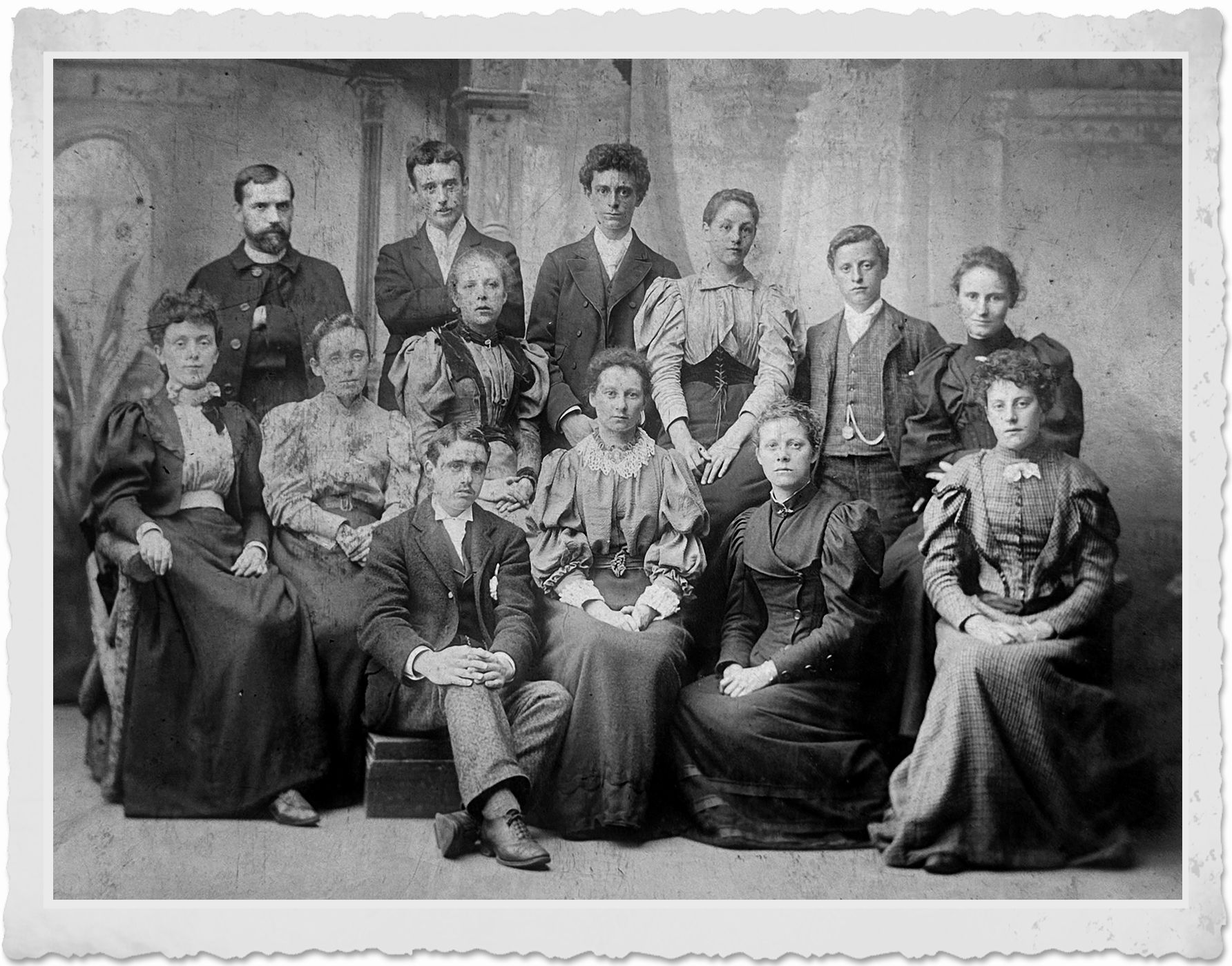
A CHURCH SCANDAL AT BURTONWOOD
Newton and Earlestown Guardian – Friday 08 April 1892
A week or two back we gave concise particulars of a dispute between the newly-appointed vicar of Burtonwood, the Rev. A. M. Mitchell, and his churchwardens and parishioners. Our reporter has visited the parish and obtained copies of the two circulars, one of which is circulated by the vicar as a “Lanton Pastoral,” in which he points out some alterations and repairs which, in his opinion, he says should be done, while the other is a rejoinder from the churchwardens, who are extremely indignant against the proposed alterations and other matters which the vicar said should be done, and they contradict the allegations of the vicar.
The churchwardens appear to speak for the parishioners, and up to the present time, things have proved very unpleasant for the church wardenship, and worst of all, there is no sign of a compromise being arranged. We give first the following extracts from the vicar’s “Lanton Pastoral,” which he addresses to the parishioners:
“It has been impossible for me, since coming into residence between two and three weeks ago, to see very many of you in your homes. As some further time is likely to elapse before I can pay you all a pastoral visit, I wish you to have some written words from me about the coming Lent, and some other matters connected with the Church and Parish. [Here follow remarks and advice on the keeping of Lent]. With Lent, too, we begin a weekly Sunday offertory. When you think about it you will be wishful, I am sure, to have such, inasmuch as our aims, our offerings, are an essential, and, therefore, important part of our Christian worship. There is no way like the offertory for giving; it is God’s way; it is the Church’s way; other ways are good—this is the best of all. It is quite optional to give or not to give; there is no compulsion. Every man as he purposeth in his heart let him give; not grudgingly, or of necessity: for God loveth a cheerful giver.
Some words about other matters bound up with our Church life will be quite in keeping with the time.
Two great needs are pressing heavily upon the parish, and ought to be immediately supplied: the new burial ground and the Vicarage house.
A site for the latter has been generously promised by the Hon. Leopold Fox-Powys, of whose recent sad bereavement and illness we all heard with much regret. The burial ground will have to be purchased, and will involve an outlay of about £250. It rests with you to say whether you wish to have it or not.
We shall want £500 or £600 more to secure such a grant from the Ecclesiastical Commissioners as will enable us to build the Vicarage house. On Septuagesima Sunday I made a proposition from the pulpit to the effect that if the parishioners would collect £250 by Easter, I, for my part, would do the same.
The proposition ought not to be allowed to drop. We must not expect everything to be done for us. We must learn to help ourselves; to depend upon our own resources; to take a real interest and pride in our Parish Church and its work. Where there is a real love for the Church there is always a jealousy, lest outsiders should do more than parishioners in the way of contributions. We have yet to learn in the English Church the immense value of the small offerings of the people—the pence of the many, the small offerings of the people—the pence of the working men and their children.
The church as a building, we must all admit, is in a very sad condition. It is as damp as any vault, and no wonder, for in wet weather (and we have had much of it lately) the rain penetrates the windows and streams down the walls. There are indications of damp, too, in one part of the roof, and it is not an unknown thing for the vestry to be deluged with water, owing to some defect in the new heating apparatus, which must be a sad disappointment to those who took so much trouble to provide it, and to all who contributed towards the expense of it. The church is so far from being comfortable that it is, as a rule, most wretched and miserable.
The result has been (how could it be otherwise?) a half-empty church. Anything will not do for God’s House. We may not, must not allow it to be in worse order and repair than our own dwellings.
To make our church comfortable, bright, aye, beautiful, ought to be our constant endeavor.
And this last thought will bring to mind most naturally that the church stands in need of many things in the way of furniture and ornaments. The font is hardly worthy of the name; very far from being in keeping with the dignity of the Sacrament of Baptism. The less said about it the better. It is an eyesore. It should be replaced by the better. It is an eyesore. It should be replaced by a new and decent one at once.
The holy table, too, is sadly wanting in dignity. It seems very doubtful if originally it was intended for sacred purposes. The cloth with which it is vested is riddled with holes, and the carpet on the floor of the Sanctuary is mildewed and rotten.
A prayer desk is necessary for the officiating minister when the service is not a holy table service; and we should have a credence table upon which to place the elements of bread and wine for the Holy Communion.
These are but a few of the many wants which need to be supplied, and I mention them, if haply, some who read this pastoral may take pity on our destitution and present gifts to the church at Eastertide.
It is a matter of regret to me, that no steps have been taken to place some memorial in the church to the Rev. W. Wilson, my predecessor, after an incumbency of fifteen years. A new font or holy table would be a most suitable memorial, and it will give me much pleasure to help forward any movement which may be made in this direction.
Another year, it will be possible, perhaps, to communicate with you through the medium of a Parish Magazine. At present there are no other means available than those to which I now thankfully resort.
All that I have said is for your good and God’s glory. May you see it in that light.”
In the circular issued by the churchwardens, Messrs. Thomas Howard and John Fairclough, they say:
“A circular has been sent round the parish as a kind of ‘Lanton Pastoral’ by the Vicar, the Rev. A. M. Mitchell, in which he publicly denounces the condition of the church.
As these statements are calculated to reflect discredit on the churchwardens, who have laboured and persevered, with the kind help of the parishioners, for the last three years, to make the church more comfortable, and of this we leave you to judge for yourselves. If we get no credit for what has been done and what we have endeavored to do since our Vicar’s arrival in the parish, we feel very proud in saying that the Rector, who is the patron of the living, when in the parish complimented us on the improved appearance of the church, and which same can be borne out by the parishioners.
We, the wardens, know our position when we were elected to the office (and this has been for three years in succession) that we should be held responsible for the maintenance and improvement of our church, and on that account we have thought it our duty to lay before you what has been done.
Three years ago, at a cost of £300, we had the old roof taken off and the present substantial one put on, and we feel bound to say that it is quite water-proof and without any indication of the rain beating in any part of it.
We are sorry to say that as the chancel and some new brickwork had to be done, and that shows a little damp; but you must bear in mind at what time of the year it was completed, it was in November, and there was no possible chance for it during the approaching winter, and very little through the summer, since, owing to so much rain,
and the many difficulties we had with the heating apparatus, which was a very great drawback on the alterations in the direction of heating and airing the church and assisting in drying the chancel, and which had been newly built, the walls of the other part of the church are perfectly dry; and in reference to the windows we think it not so much the rain that is beating through, but simply a moisture which runs down at any time when the church is being heated.
So much for the sad condition of the church and its most wretched and miserable appearance. Our Vicar tells us the result has been a half-empty church.
We also had the roof taken off the vestry and a new one put on; when this was done we had the interior of it beautified and made as thought very comfortable indeed, at a cost of £20:
We also had the gallery re-seated at a cost of £210 10s. and new stairs put up to the gallery which has not yet been paid for.
We also considered that the old heating apparatus was so damaged that it was quite useless and not worth repairing, in fact the cost for repairs would have been more than its value, and this necessitated the consideration of various systems of church heating which would give more satisfaction, (and this was done at a very great sacrifice to our private business just at that time). We eventually elected the present apparatus which cost about £100, this has given us a little trouble owing to not thoroughly understanding the working of it, but we hope to do so shortly, and hand it over to our successors in a perfect working condition, and we trust, whoever they may be, that they may be more skilled in their duties than we have been, and make the Church more comfortable, and not leave, as our vicar would try to make you believe, as being most wretched and miserable, this being the cause of a half-empty church.
We must take the trouble to contradict this and say that we had a good congregation and was steadily increasing a short time back, it is not so now, it is decreasing gradually, and the consequence is not so much the wretched state of the church, but simply because the parishioners have no voice in the appointment, and are asked to submit to a form of worship that is quite foreign to the worshippers.
Well, apart from this, our church may not be quite so comfortable as those of more modern days, but that it is not in such a condition as our Vicar implies, we feel sure you will agree with us if you will come and judge for yourselves; the church, we have no hesitation in saying, never was more comfortable in the recollection of any parishioner, so that the wretched condition cannot account for the poor congregation.
Reference is made to the Holy Table also, which we think should be seen to be admired, we consider it a special work of art; it is a masterpiece for its beautiful work of carving.
The cloth with which it is vested, we have not noticed its appearance so closely, and the carpet on the floor we scarcely think is so bad as implied in the circular; and what other ornaments are necessary time will show.
In conclusion, our Vicar says it has been impossible for him, since coming into residence, to see very many of the parishioners.
Had he accepted our offer, he would have known most, if not all, of you, within the first week of his taking charge of such a neglected, wretched and miserable Church.”
Our representative has had an interview with Mr. Thomas Howard, the senior churchwarden. He said:
“There is a great objection to having an offertory, as there is a box placed in the church which has served us better than if we had had an offertory.
We have taken ten or twelve shillings out of that box at each service, but since the vicar has been here there is hardly anything placed in the box.
If there is a collection the people will all stop away from church.
If there is any money wanted all the parishioners are willing to put a pound or two towards it.
Another serious matter which the parishioners have done was that they have all withdrawn their subscriptions from the fund which in being collected for a burial ground.
The church is not in a dilapidated condition.
The vicar throws out his insults to us from the pulpit at nearly every service about the burial ground and a vicarage. As to the communion table there is never such a table as that in Burtonwood, and the cover, I admit, is moth eaten, but very little.
The things the vicar wants done are entirely unnecessary, but he has been alluding to them ever since the first Sunday when he read himself in.
I believe the rector is going to build him a vicarage house.”
This was all the additional information Mr. Howard could give. With this addition, we leave the respective circulars to speak for themselves.
THE BURTONWOOD CHURCH DISPUTE – THE VICAR WANTS SUBSCRIPTIONS
Newton and Earlestown Guardian – Friday 29 April 1892
On Sunday morning, the congregation of St. Michael’s Church, Burtonwood, were greatly surprised when they saw that the communion tablecloth was covered with velvet and a handsome rug.
The floor within the communion rails had also been altered so that now the table is approached by two footsteps.
At the close of the sermon, the Vicar intimated that he had received the beautiful gifts and he asked the parishioners to join him in thanking those who had bestowed them. He remarked that he was anxious to raise about £1,000 by Whitsuntide for a vicarage and needed alterations to the church building, and he wished to engage the services of a parochial or mission nurse to attend to the sick people of the parish. That would require about £50 per annum, and he commended the objects he had in view to the notice of the parishioners.
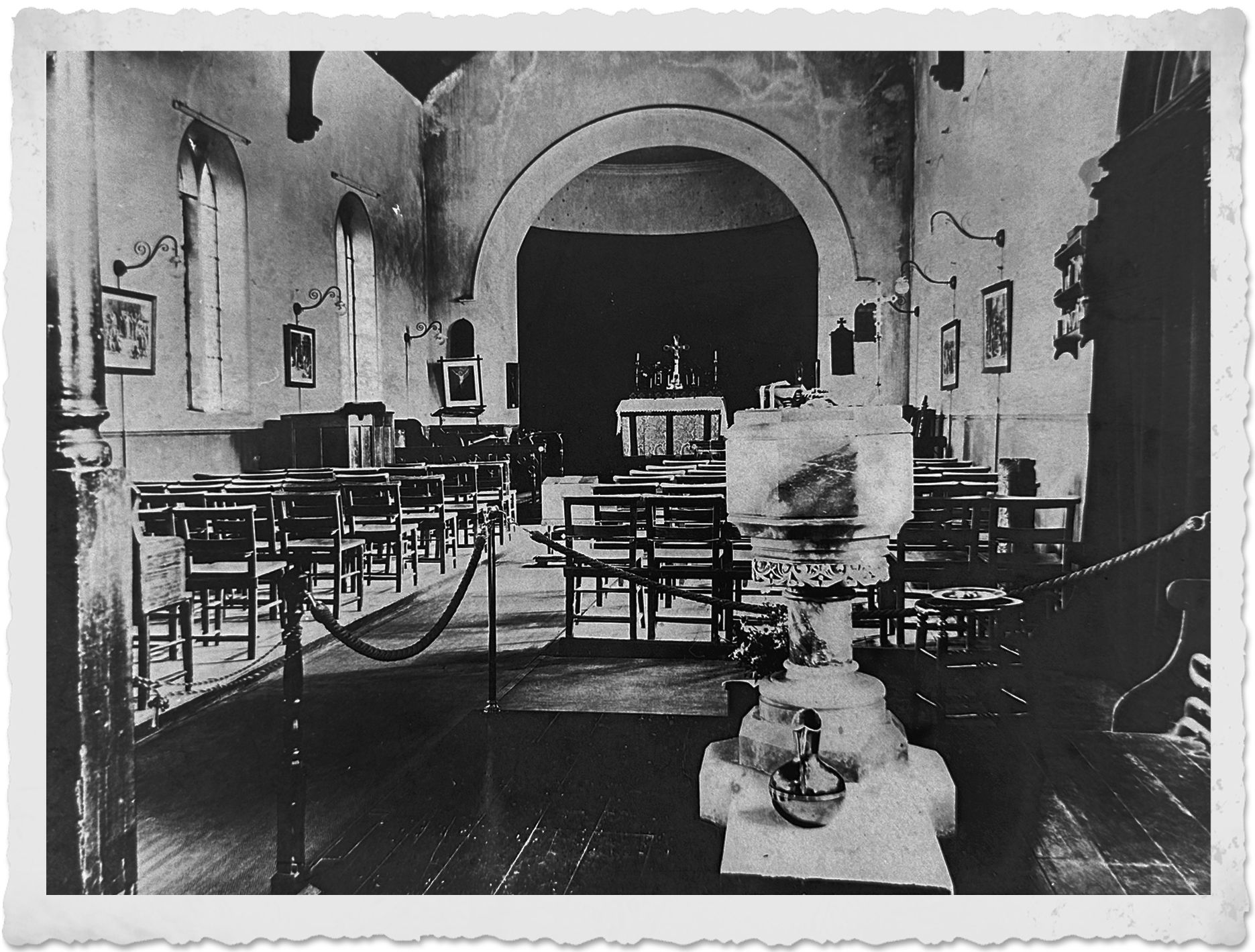
BURTONWOOD CHURCH
Newton and Earlestown Guardian – Friday 10 June 1892
A new font, designed and built by Messrs. Jones and Willis of Birmingham, was used for the first time in Burtonwood Church last Sunday. After the ceremony, the Vicar delivered an address thanking those who had contributed to the cost of this new ornament for the Church. He also acknowledged the new churchwardens for their help in arranging and placing it. During his speech, he took the opportunity to address the disputes that have stirred up the parish since his appointment to the vicarage, blaming the newspapers for having had much to say about him and for lending themselves to the creation of Church scandals.
Whether this blame is merited or not, the reverend gentleman knows how to make use of the press in his own way; witness the following singular advertisement which recently appeared in a Church of England newspaper:
“Church in Lancashire.
Churchmen to the rescue.
Splendid opportunity for establishing Church principles in a benighted quarter of Lancashire. Burtonwood, in the diocese of Liverpool, is in immediate need of help from all loyal Churchmen.
A stronghold of Romanism and dissent.
People prejudiced;
some hostile;
Vicar harassed.
Wanted immediately, £500 to complete vicarage fund (£800 already secured) no house to be had in the parish; vicar has to walk seven miles to take daily offices; £500 to build a parochial room no room of any kind available, population over 1,600, many callers; £250 to put Church and Churchyard in decent repair; £150 a year towards supporting a curate, mission nurse, and Church Army officer (vicar single-handed, parish contains three hamlets, and covers an area of six square miles).
Work done in three months: Church made open, daily prayers established, early and saints’ day celebrations instituted, a weekly offering introduced, sanctuary made comely, Church Army set to work.
Contributions to be forwarded to the Rev. A. M. Mitchell, Burtonwood, Newton-le-Willows, with the least possible delay.
To the help of the Lord against the mighty.”
Mr. Mitchell’s situation at Burtonwood is an instance of the workings of a system by which ministers are imposed on congregations without their consent. He arrived as an unwelcome stranger, and this fact did not incline the people to a favorable reception of the ritualistic reforms he was zealously anxious to introduce. Whatever may be said of his discretion, however, Mr. Mitchell appears to be a man of perseverance. He continues his daily services, though, as sometimes happens, there may not be a single person present to constitute the semblance of a congregation.
THE BURTONWOOD CHURCH DISPUTE
Newton and Earlestown Guardian – Friday 17 June 1892
A Burtonwood “Parishioner” has written the following letter to the “Liverpool Post”:—
“During the latter part of the late vicar’s (Mr. Wilson’s) illness, Mr. Johnson, of Ormskirk, was temporarily appointed to take charge. He succeeded in making himself beloved and gave general satisfaction. When Mr. Wilson died, the parishioners desired that Mr. Johnson’s appointment be made permanent. The Rector of Warrington was approached with that object. However, he evidently had another in view, as Mr. Mitchell, after having the living offered to him, came to see the church and was finally appointed. This was despite being informed that the congregation was very well satisfied with Mr. Johnson, thus sowing the first seeds of discord.
Under Mr. Johnson, the Church and Sunday School attendance had been rapidly increasing, but since he left, it has gradually gone the other way. Mr. Mitchell seems to think the congregation should alter their form of worship at a moment’s notice to suit his views. With regard to the heating apparatus, Mr. Mitchell claims he paid
£10 for it. In fact, it was installed before he came, with the late wardens finding the money. They are now waiting for the balance of £23, and I think it would better become the vicar to ensure that the money is repaid to them before spending money on articles which could easily be dispensed with.
In regard to the church building, there has, within the last ten years, been upwards of £500 spent on it, consisting of a new roof, windows, stonework all around, new pews, and flooring. And still, Mr. Mitchell claims that the church is in a dilapidated state. In regard to the churchyard wall, it is in fair condition at the front and new at the end.
The late wardens lost valuable time in going about collecting money from outsiders for the good of the church, and yet their services do not seem to be appreciated by the present vicar. One of the wardens is not eligible, as he is not a ratepayer, and where the late wardens could get a subscription of £10 for the church, the vicar could not get 10s.”
a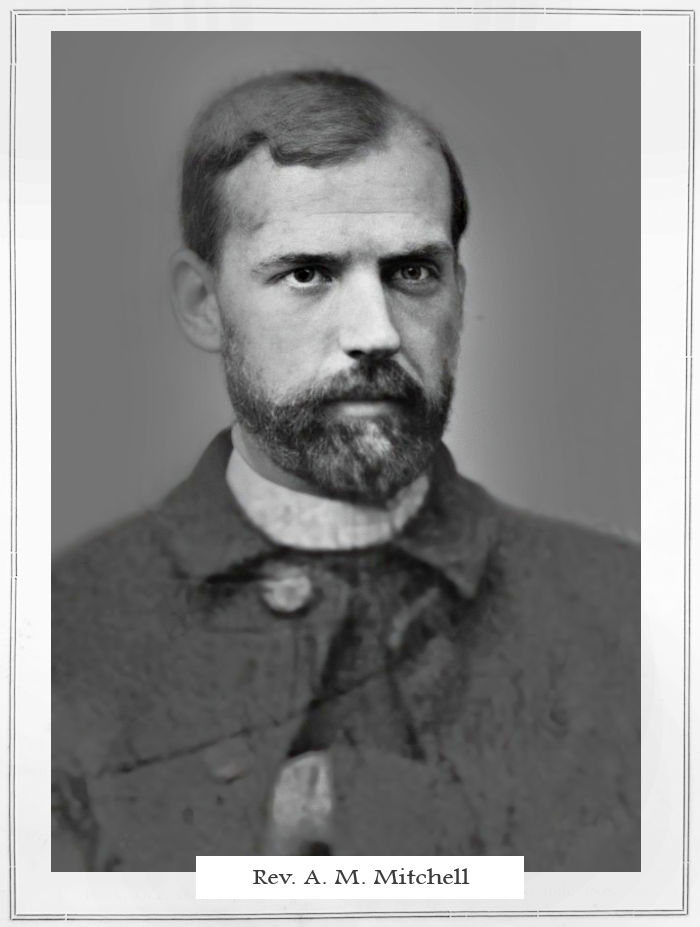
BURTONWOOD VICARAGE
Newton and Earlestown Guardian – Friday 25 August 1893
The first sod of the new vicarage site was cut last week by the vicar, the Rev. A. M. Mitchell. The site is in the corner of a field on the farm of Mr. John Fairclough, Bordered Barn Farm, and is against the lane leading to Winwick.
As many of our readers are aware, the land is part of the estate of the late Leopold Fox Powys, Esq. This deceased gentleman had generously given the site. Hitherto, Burtonwood vicars have been compelled to reside in incommodious dwellings.
The present vicar has, by indefatigable exertions, raised a fund of nearly £1620.
Particulars of this are to be found in the Church and Parish Chronicle of St. Michael’s Church for July and August of the current year.
Mr. Lucas, of Prescot, has been the successful contractor for the erection of the new vicarage.
BURTONWOOD PARISH CHURCH.
St. Helens Newspaper & Advertiser – Tuesday 18 February 1902
The Rev. A. M. Mitchell, Vicar of Burtonwood, has written the following letter to a contemporary:—
“You will not object, I imagine, to allow me space in your columns to make known the fact that our church here is a condemned building, and that willing or unwilling, we are now face to face with the serious task of erecting a new parish church. The case is one of necessity; we have, I regret, no choice, if the Ecclesiastical Commissioners’ Surveyor is deemed worthy of credit. The report of this gentleman on the Church of St. Michael, Burtonwood, is best given verbatim. No words of mine can make it more forcible or more eloquent.”
This is the report:-
“This church is a building of very poor character, erected in 1764, and re-roofed and re-fitted in a temporary manner about ten years ago.
It consists of a nave and chancel all in one, 63 feet long by 21 feet six inches wide, with a shallow apse at the east end to receive the communion table; a small tower, nine feet square inside, at the west-end, with a vestry built out to the north of it and a porch in the south side of the nave.
The heating vault is under the vestry and is not protected by a fire-proof ceiling.
The walls are of rough brickwork with stone groins and dressings. The main walls of the church, nearly 20 feet high, are only 14 inches thick with piers, or buttresses.
Those of the tower, which is 12 feet high, and of the vestry are only nine inches thick. All are in a more or less unsatisfactory condition, many settlements having taken place, especially in the tower and east wall of the church, and in the porch.
The chimney, and steps to the vault are in a dilapidated state, and the stone copings, etc., are defective.
The main roof of fir, covered with slates and boarded inside between the trusses, is a very weak one. The roof of the apse is in bad condition.
Internally the wood floor of the nave is weak and unsatisfactory, the joists being placed almost close down upon the earth.
The chancel floor is formed on a raised platform of wood, in a temporary manner.
This building is in no sense a substantial structure, nor is it fit to be a parish church.
It would not be worth while to spend upon it the large sum which would be required to put it into strong and lasting condition.”
The Rev. A. M. Mitchell continues:-
“This is a plain statement of facts, a statement writ so large upon the fabric of St. Michael’s that he who runs may read.
The church is unmistakably going from bad to worse, or, more truly, perhaps from worse to worst.
The choice lies apparently between two things: pulling down and or it tumbling down.
Which is it to be—demolition or collapse?
Serious trouble will result before long if some portions of the building are not removed.
The time for action, prompt and judicious, has now undoubtedly arrived, the hour is opportune from many points of view.
I seek, on behalf of my people, the sympathy and help of Warringtonian’s, in the great work of giving to the parish a dignified and adequate church.
The patron of the benefice, the kindly Rector, is with us heart and soul, and will welcome, with great gladness, a new and comely daughter to the dear old mother church of Warrington.
To build a handsome church at Burtonwood is a herculean task; I am, however, sufficiently optimistic to believe in the complete success of our venture.
My optimism rests upon a two-fold foundation:-
(a) faith in God
(b) faith in man.
Anyhow a strong representative Building Committee is being got together with the Bishop of the diocese at its head. This committee which, it is hoped, will get to work by Easter, includes so far Lord Lilford, the Rector of Warrington, the Archdeacon of Warrington, local Rural Dean of Winwick, and our leading local men. We have kind encouraging words from Mr. Henry Lyon, who hopes to come to our assistance a little later.
The building scheme includes, also, the erection of a Church Hall, or schoolroom. We have no meeting place of our own, except the old and condemned church; Work among children and adults is thus very seriously handicapped, and too often means, ‘Loves labour lost.’
Our intention is to put up church and parish room side by side, as being:-
(1) most economical
(2) most convenient
The cost of the two buildings together will not be under £8,000.
This is to be a memorable year, in more ways than one, and many of us would like to see a lasting monument of it in the form of a stately House of God.
Warrington does not stand aloof from good works, nor lag behind on ‘The way of charity,’ and she will be forward, if I mistake not, with generous ready help to remove the reproach of her lonely and unlucky daughter.”
